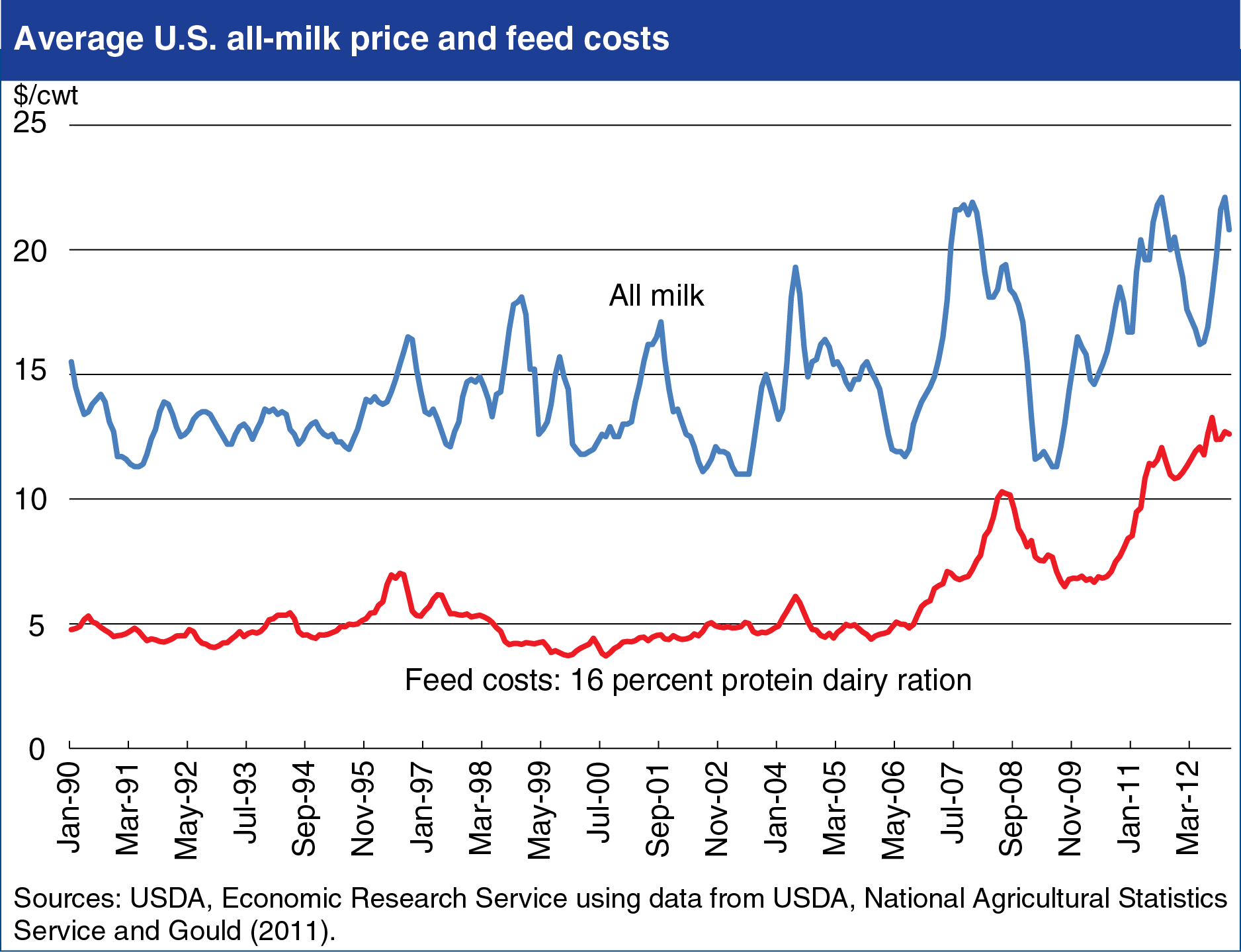U.S. dairy producers have faced increasing price and feed cost volatility
- by Erik Dohlman
- 3/5/2014

Over the last 20 years, U.S. dairy producers have faced rapidly changing milk prices and input prices, primarily for feeds. The monthly average U.S. all-milk price has been highly volatile since 1990, particularly in more recent years. Factors that account for the increasing variability in milk prices include increased U.S. involvement in (and dependence on) export markets, and weather events in both the United States and other exporters that affected production and dairy stock levels. More recently, dairy producers also faced higher feed costs. Dairy producers generally have low adoption rates of traditional price risk management tools, such as forward contracting, and the use of futures and options markets and trading. The Livestock Gross Margin for Dairy (LGM-Dairy) insurance program is a relatively small and new public risk management program overseen by USDA’s Risk Management Agency (RMA) designed to protect margins between milk prices and input (feed) costs, rather than simply supporting prices. Analysis of the LGM-Dairy program shows that it can be effective in reducing risks, but is unlikely to substantially change farmer’s production level decisions. Find this chart and more analysis in Livestock Gross Margin-Dairy Insurance: An Assessment of Risk Management and Potential Supply Impacts.

